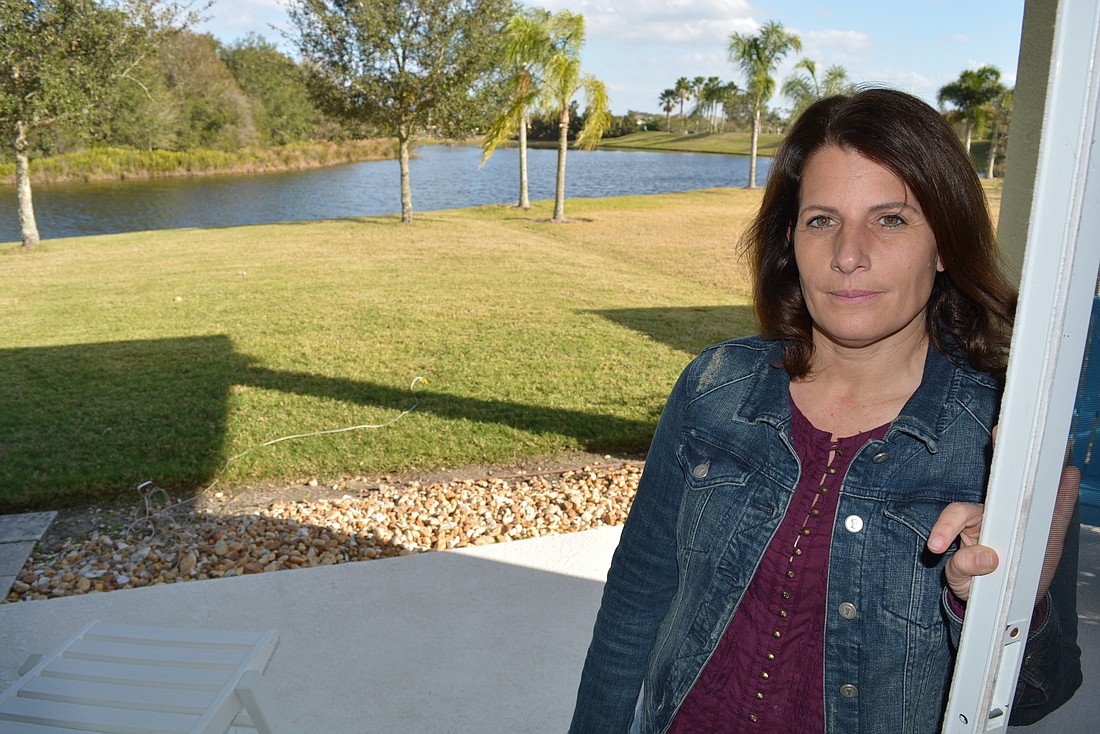- January 18, 2025
-
-
Loading

Loading

Like any other night, Julie Young picked up her 2-pound Chihuahua, Pumpkin, and carried her outside her lanai Jan. 20 so the dog could relieve herself.
Young sat Pumpkin down on the grass, just inches past the edge of her concrete patio.
The sliding glass door to the Central Park home was left open as Young waited for Pumpkin to finish. The two turned around together to go back inside.
But they didn’t know a coyote was watching.
“(Pumpkin) was literally at my feet,” Young said. “As we turned to come in a foot from the door, the coyote came from the
side bushes.”
It grabbed Pumpkin before Young realized what was happening.
“I could have petted that coyote if I’d had reached for it,” she said.
Pumpkin was gone. Young spent much of the night crying, but wants the incident to help others be more aware of their surroundings.
Like alligators, coyotes are commonplace in Florida. In some East County neighborhoods, residents can hear them howling at night. Sightings are rare in some communities, and not so rare in others.
Often, those on the social networking service nextdoor.com note when a coyote is spotted, such as one that was walking Jan. 25 along Top Minnow Lane in Greenbrook.
Ed Straight, president of the Anna Maria Island-based wildlife rehabilitation group Wildlife Inc., said coyotes are common in the area, but seem to have become more intrusive over the past two months. He took at least 30 calls during a two-week period around Christmas about coyotes sleeping in people’s driveways and yards.
“They’ve just been chased out of wherever their environment was and they’re adapting,” Straight said. “As they continue to bulldoze areas where they had been, they’re confused, and they don’t know where to go. You find them wandering around. They don’t seem to know where to go to hide.
“We have them walking around the streets of Bradenton Beach, around (parts of) Bradenton. We had one walking around the concession stand at Coquina Beach a few days ago.”
Straight said he saw problems with coyotes first in 2014 in the Village of Cortez in Bradenton when there was a large outdoor cat population. The coyotes had found an easy food source. With that came an explosion in the coyote population since coyotes bear more offspring when they have more food.
“We’re going to have to learn to live with coyotes because they’re too embedded in the United States,” Straight said. “They’re in every county in Florida.”
He says feral cat populations are everywhere and larger than you might expect. He said such populations are a main reason coyotes are coming into residential areas. The coyotes themselves are inquisitive and appear unafraid of people. He said making loud noises and chasing them away is an important step to keeping them off an individual’s property.
“If people don’t continue to frighten them, then they start feeling more comfortable,” Straight said.
Florida Fish and Wildlife Southwest Region spokeswoman Melody Kilborn said as the human population increases in an area, there are bound to be more human-coyote interactions.
Although there are confirmed attacks on pets, there have been none reported on humans, the FWC reports. She said it’s hard to say why coyotes come to particular areas — there’s debate as to whether development attracts them because it provides an easy food supply or runs them off their natural habitat — but coyotes can live just about anywhere.
“They’re really well adapted to rural, urban and suburban areas, and they eat a variety of food,” she said. “They eat rodents. They can also eat small mammals, which is where the concern is for small dogs. We know that human attacks from coyotes are very rare.”
Kilborn said there are no organizations that specifically track coyote populations in Florida, but FWC knows coyotes live in all 67 counties and in every U.S. state except Hawaii. She said hunting coyotes does little to deter the population, for the species responds by producing babies younger and having bigger litters, allowing for coyote populations to swell quickly.
Kilborn said the FWC encourages pet safety, like being aware of your surroundings, keeping your pet on a short leash (not retractable) and carrying something, like a soda can filled with pebbles, to make noise if a coyote comes near. Making loud noises and other measures meant to scare coyotes is referred to as “hazing.”
“What you are wanting to do is make that coyote uncomfortable and to make them respect you and your property,” Kilborn said.
Young said Pumpkin’s death has reminded her to be more aware of her surroundings and to learn about hazing coyotes, so they stay away from her property.
She had always thought about hawks and alligators stealing her dogs, but never a coyote.
“I’d never given it a second thought about it before,” Young said. “I’d never seen (coyotes) around here before. I wish I had looked around my environment.”
Manatee County spokesman Nicholas Azzara said Manatee County Animal Services oversees dogs and cats only and any complaints about coyotes are directed to FWC.
He said he was not aware of any discussion by Manatee County commissioners or public requests for a wildlife sanctuary or some sort of process to provide habitat for animals displaced by development.